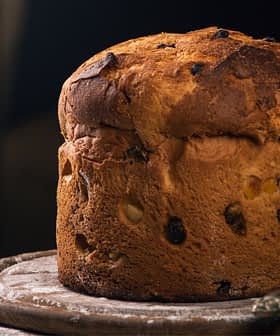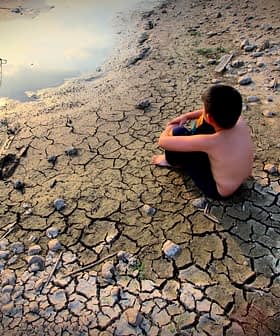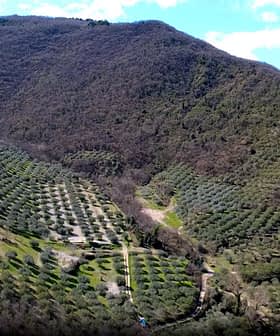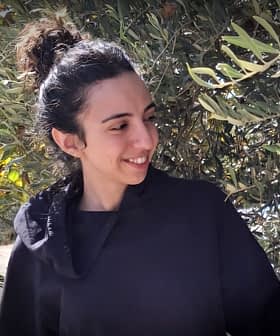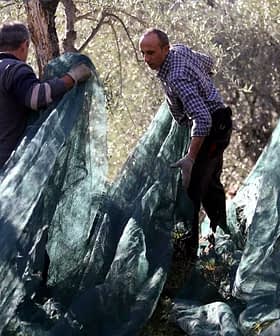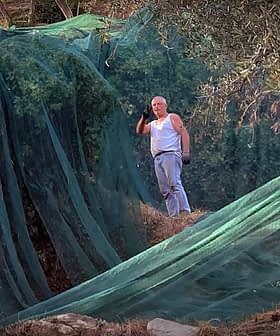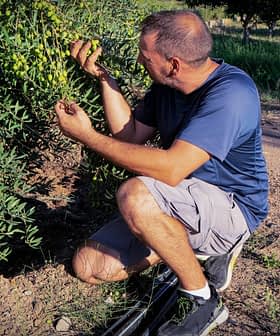An Art Exhibition Among the Olive Trees in Umbria
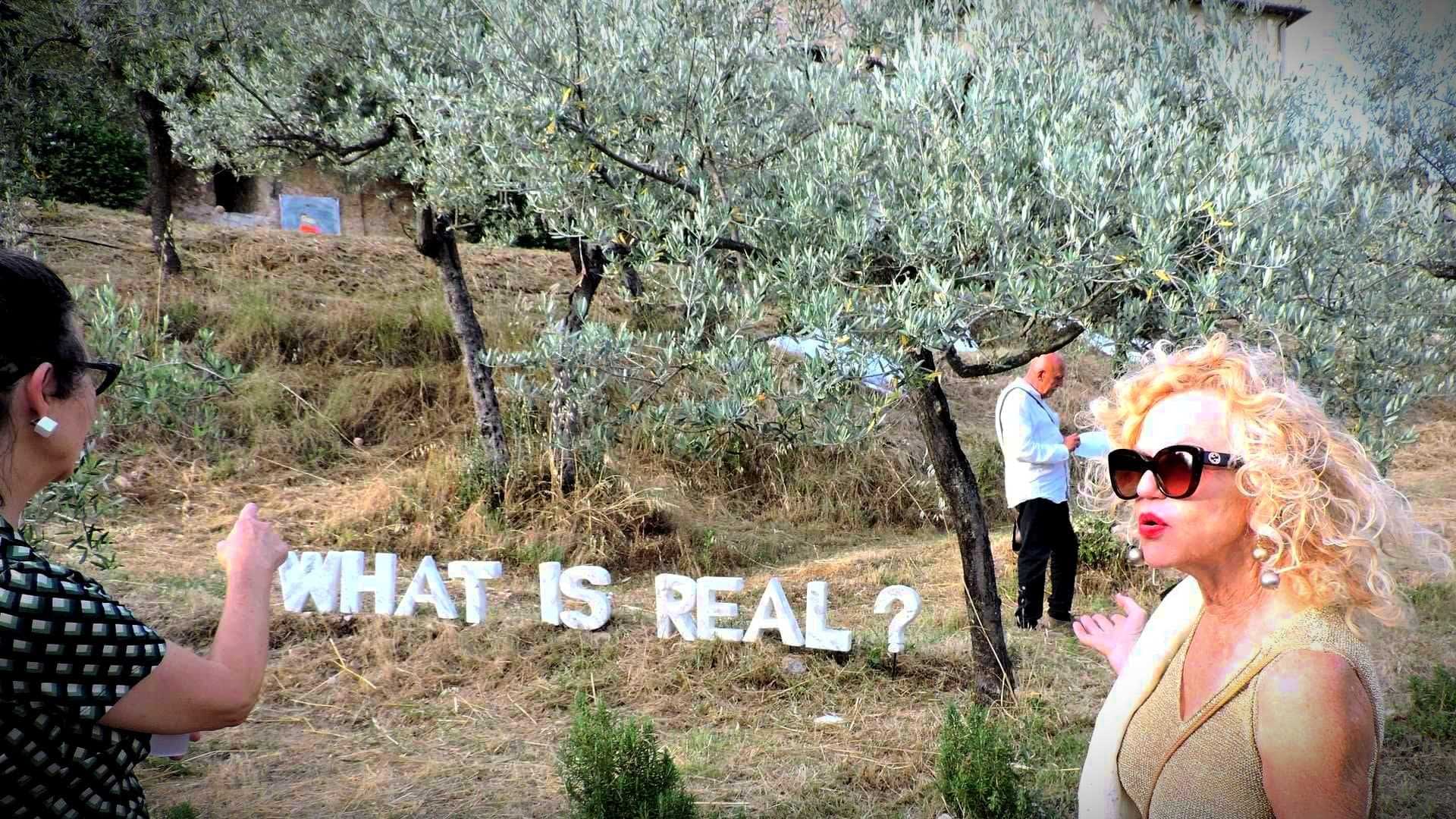
In Italy’s olive groves, activities beyond farming, such as art exhibitions, are becoming more common due to the desire for open-air settings post-Covid-19. Artist Virginia Ryan hosted an exhibition in her olive grove in Trevi, Umbria, bringing together 47 artists to display installations among the trees, with a focus on growth, renewal, and reconnecting through art.
Activities besides farming are increasingly taking place in Italy’s olive groves.
The growing need for open-air settings in the wake of the Covid-19 pandemic favors the use of places that provide a peaceful and healthy environment.
It was an event of art, community, nature and beauty.
These factors prompted an Australian visual artist, Virginia Ryan, to host an exhibition at her property in Trevi, Umbria.
“Before we came here, we lived in several countries around the world, and my art has influences from all the different places where I stayed,” Ryan told Olive Oil Times.
See Also:Greek Painter Dedicates Athens Mural to the History of Olive Oil Production“Among others, I have worked closely with anthropologists, and I have a strong tendency to create a relationship with the place where I am,” added the artist, whose work includes drawing, painting, photography and installations.
In 2016, she moved to the Umbrian town in the province of Perugia with her husband and settled in an estate that comprises an olive grove and housed an oil mill until the 1950s.
Due to its particular urban structure, the olive trees are located right in the historic center of Trevi, overlooking the valley below.
“Last year, in the aftermath of the Covid-19 restriction measures that we all have experienced, I started working in the orchard,” she said. “I have a great affinity for all my plants.”
When it came time for Ryan to do some maintenance among the groves, she decided to revive them.
“After the lockdown, [the orchard] acquired a new meaning,” she said.
In collaboration with the Trebisonda and Freemocco associations, Ryan brought together as many as 47 artists for a one-day event held on the summer solstice. The artworks, mostly installations, were displayed among the olive trees.
“I really liked the idea of the solstice enchantment and also the fact of working for a very elusive moment,” she said. “We had already organized a first one-night event in a part of the garden, with about 30 artists, in 2015.”
“Then, towards the end of last year, we started thinking about a new event,” Ryan added. “We hoped that for the beginning of the summer, with the relaxation of social distancing measures, we could be physically close again. Eventually, it was possible, and we planned the exhibition called ‘Actualizing Tendencies.’”
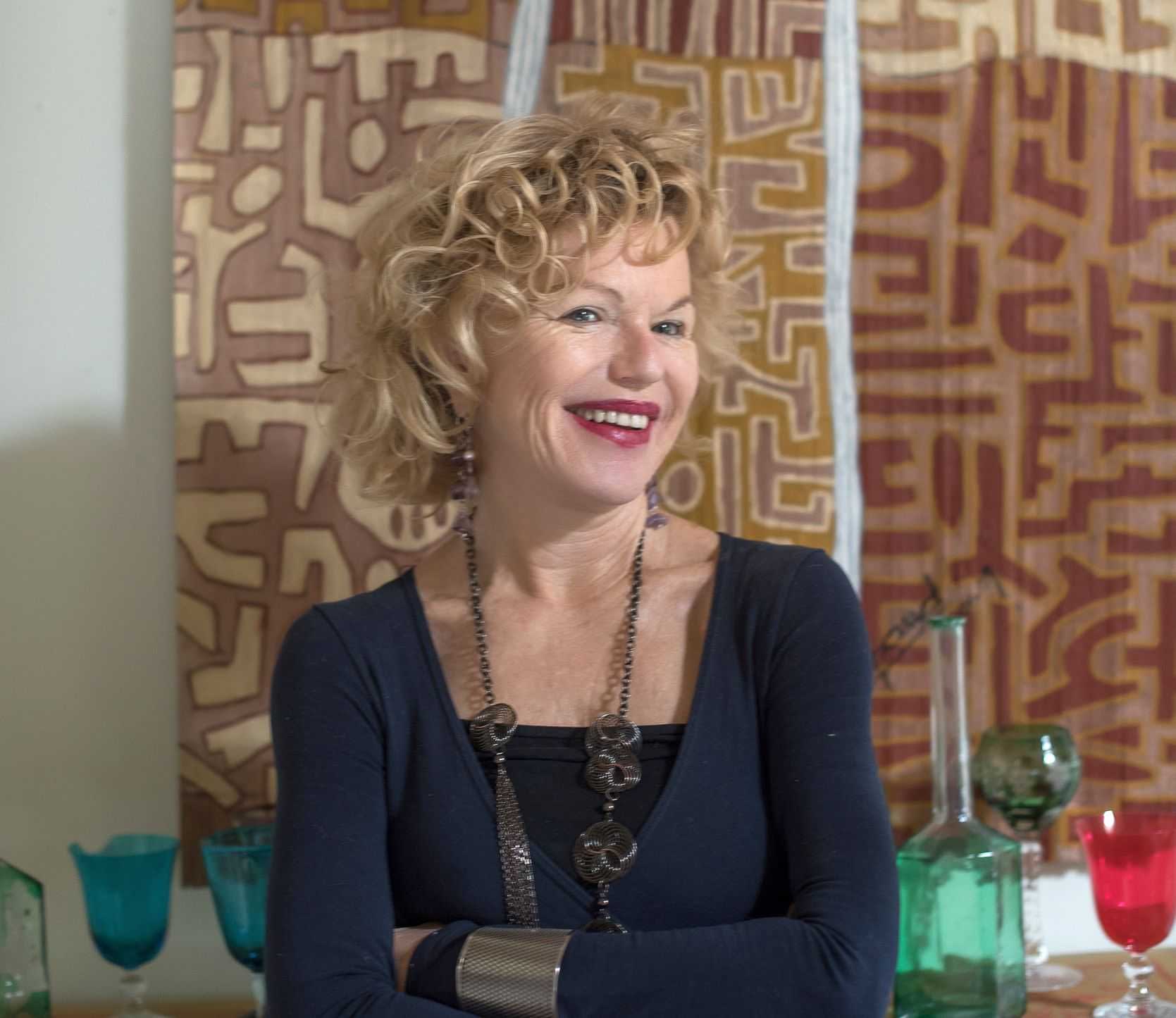
Virginia Ryan
Developed in the 1960s by the American psychologist Carl Rogers, the actualizing tendency is a concept that refers to an active push for the organism to improve itself via better organization, fulfillment of its potential and growth.
“Rogers used the example of a potato plant that he saw growing in a cellar in Dublin,” Ryan said. “The little sprout climbed up the wall towards a feeble ray of light. I thought the idea of a vital drive within every living organism is a very positive and affirmative concept at a time when we have to move towards light, openness and growth again.”
In the weeks before the exhibition, the artists were invited to visit the site and see the spaces that would have hosted their works, almost all of which were installations.
“The setting-up in the olive grove was ideal,” said the artistic curator Davide Silvioli, who, along with Mara Predicatori, wrote the texts for the exhibition catalog.
“Perched on terraces, the orchard allowed the visitors to follow a path, between the plants and the corresponding works, which unraveled through the elements of the site, namely the olive trees, the earth and the medieval wall around the grove,” Silvioli said.
“Following the claim of the exhibition, that is the vital impetus of nature that affirms itself beyond contingencies, the artists were prompted to create works that convey this concept, a dimension that all of us as individuals have recently experienced,” he added.
“The event also had the aim of reconnecting an artistic network that had become somewhat frayed after all that happened,” Silvioli continued. “It lasted one day for the symbolic significance of the solstice as a climatic, meteorological, universal passage, and the artists were required to physically attend it to reinforce this symbolism and effectively transmit the vital impetus through art.”
Some works have been located at the base of the olive trees; other installations have gently been leaned on the branches – the works of art were always devised in relation to the plants.
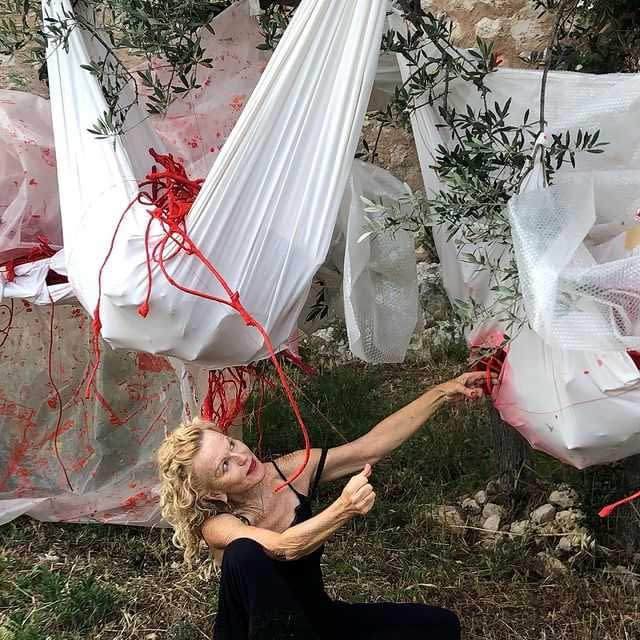
In the shadow of an olive tree, the Tuscan artist Samantha Passaniti conceived and set up the installation ‘Uncertain Floor,’ an uneven pavement made of loose tiles, which are actually wooden boards coated with white pigment from the family carpentry business and placed on the ground. The stalk of a succulent plant springs from a gap at its core.
“I wanted to transmit the idea of walking on the rubble of a blown floor,” she said. “The sense of uncertainty that we all went through in the last period characterized by the pandemic was disruptive, yet for many of us was crucial to find new stability, a renewed sense of hope.”
“One slow step after another, I follow the oscillation that the wobbly support suggests until I feel stability, and I finally can take another step forward,” Passaniti added. “Uncertainty, insecurity, patience, listening and trust are essential elements without which there is no movement.“

Uncertain Floor by Samantha Passaniti
“In this complicated dance towards something desired and perhaps only imagined, a green sprout rises between the cracks of this demolished soil to signify that what we were looking for was here already,” she continued.
The mayor of Trevi, Bernardino Sperandio, was present at the event, which was attended by local people, art connoisseurs and enthusiasts, collectors and artists.
“This event is not intended to be annual, but occasional,” Ryan said. “At this time, it was also a way of paying tribute to the land that has nourished and supported us in this difficult time.”
“We have put together body, spirit, appreciation, struggle, and I was so moved by everyone’s generosity that allowed us to arrange everything with great harmony,” she concluded. “It was an event of art, community, nature and beauty.”


